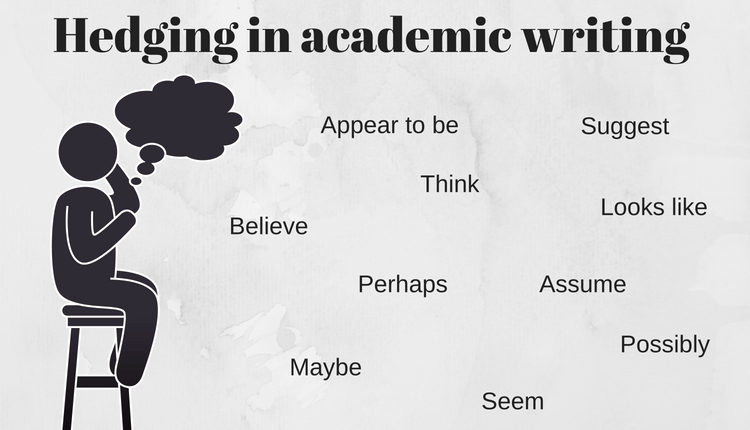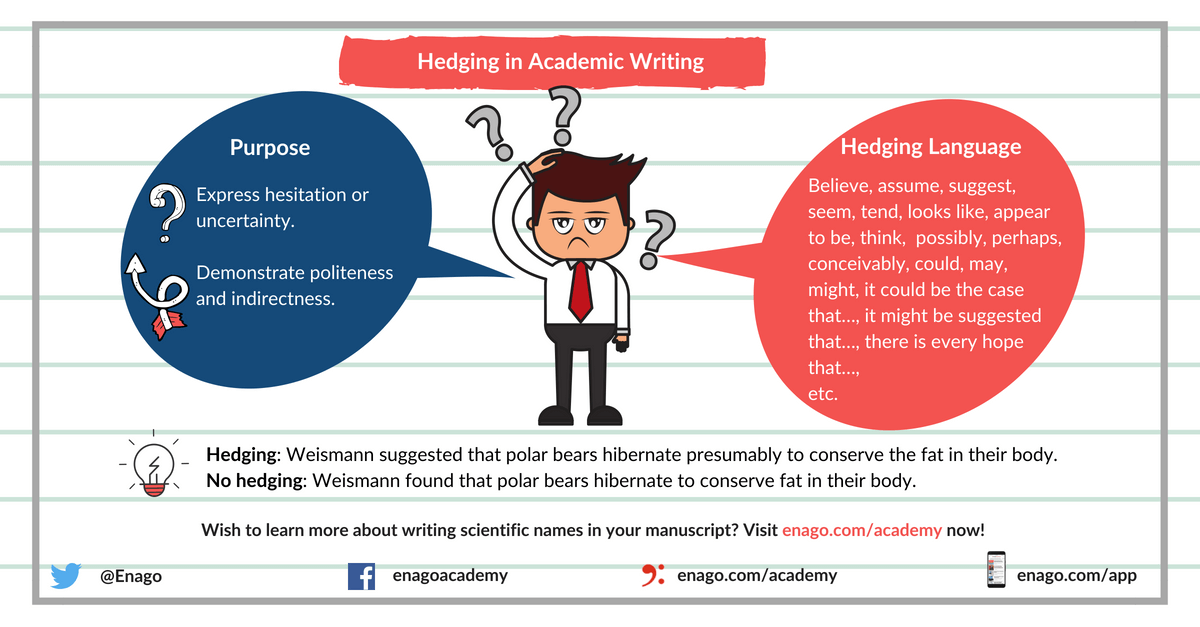How Is The Writing In A Blog Is Different From Academic Writing? Check All That Apply.

In academic writing, it is prudent to be cautious in one's statements so as to distinguish between facts and claims. This is commonly known as "hedging." Hedging is the use of linguistic devices to express hesitation or uncertainty as well as to demonstrate politeness and indirectness.
People use hedged language for several different purposes but perhaps the most fundamental are the following:
- to minimize the possibility of another academic opposing the claims that are being made
- to conform to the currently accepted style of academic writing
- to enable the author to devise a politeness strategy where they are able to acknowledge that there may be flaws in their claims
Following are a few hedging words and phrases that can be used to achieve this.
- Introductory verbs – seem, tend, look like, appear to be, think, believe, doubt, be sure, indicate, suggest
- Certain lexical verbs – believe, assume, suggest
- Modal Adverbs – possibly, perhaps, conceivably
- That clauses – It could be the case that…, it might be suggested that…, there is every hope that…

Consider the following hedging language examples:
- It may be said that the commitment to some of the social and economic concepts was less strong than it is now.
- The lives they chose may seem overly ascetic and self-denying to most women today.
In the first statement, the commitment to some of the social and economic concepts was less strong than it is now while in the second one, the lives they chose seem overly ascetic and self-denying to most women today.
Related: Need instant academic writing tips on your cell phone? Download the Enago Academy mobile app now!

A crucial advantage in academia is that studies are often interpreted from multiple perspectives. This inherent openness leaves room for improvement and development in most fields of study.
Think you know what is hedging in academic writing and how to use it? Find out by attempting the exercise here:http://aeo.sllf.qmul.ac.uk/Files/Hedging/Hedging.html.
Enago Academy, the knowledge arm of Enago, offers comprehensive and up-to-date resources on academic research and scholarly publishing to all levels of scholarly professionals: students, researchers, editors, publishers, and academic societies. It is also a popular platform for networking, allowing researchers to learn, share, and discuss their experiences within their network and community. The team, which comprises subject matter experts, academicians, trainers, and technical project managers, are passionate about helping researchers at all levels establish a successful career, both within and outside academia.

Sign-up to read more
Subscribe for free to get unrestricted access to all our resources on research writing and academic publishing including:
- 2000+ blog articles
- 50+ Webinars
- 10+ Expert podcasts
- 50+ Infographics
- Q&A Forum
- 10+ eBooks
- 10+ Checklists
- Research Guides
Please enter a valid personal email
We hate spam too. We promise to protect your privacy and never spam you.
How Is The Writing In A Blog Is Different From Academic Writing? Check All That Apply.
Source: https://www.enago.com/academy/hedging-in-academic-writing/
Posted by: galvanlaideard.blogspot.com

0 Response to "How Is The Writing In A Blog Is Different From Academic Writing? Check All That Apply."
Post a Comment